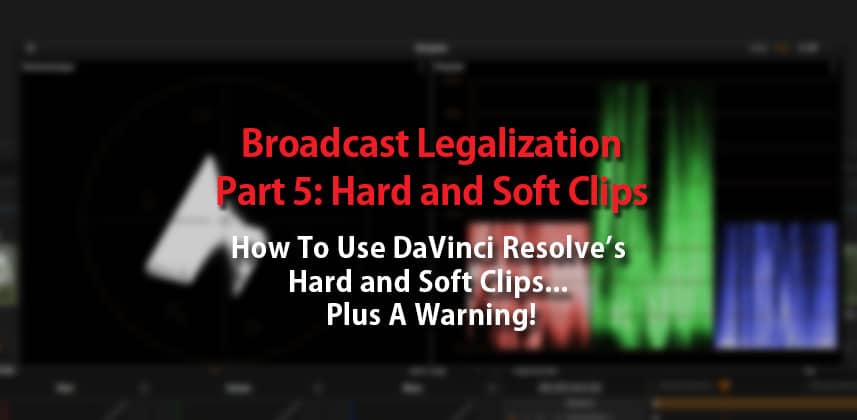| Series |
|---|
The Sledgehammer Approach To Legalization
In Part 4 we looked at several strategies for dealing with over-saturated images and to help reduce the possibility of generating below-zero RGB gamut excursions (using Resolve’s Soft Clip tool).
In this Insight, we’re going to examine my strategy for legalizing at the timeline level in DaVinci Resolve. We have to do this differently than in Premiere Pro CC or SpeedGrade CC since there is no filter or checkbox for automatic legalization. Instead, we have to take a DIY approach.
DIY Part 2: Legalizing the Timeline in DaVinci Resolve
In this Insight, you’ll learn how to use Hard Clipping in DaVinci Resolve to automatically clip momentary specular highlights (that you may miss by eye) and clip our deepest shadows (to help reduce the chance for below-zero RGB gamut excursions).
You’ll also see how using ANY clipping – hard or soft – is a destructive operation and why they shouldn’t be used in the middle of your Node Tree.
Member Content
Sorry... the rest of this content is for members only. You'll need to login or Join Now to continue (we hope you do!).
Need more information about our memberships? Click to learn more.
Membership optionsMember Login


